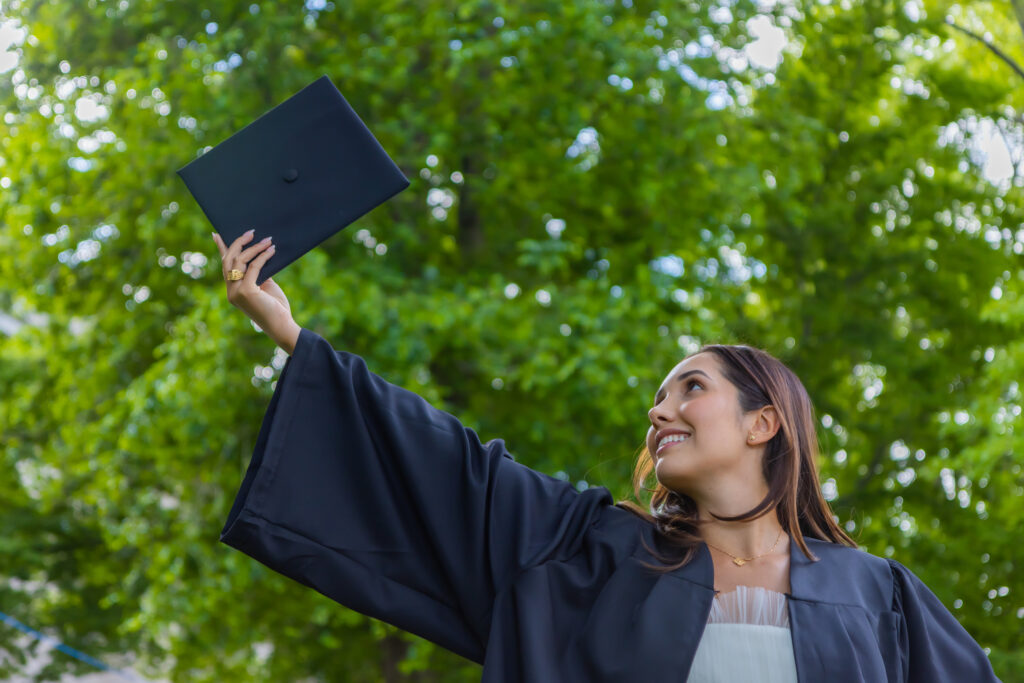Student Spotlight: Isabella Pedraza Piñeros
 Photo credit: Frankie Schulte
Photo credit: Frankie Schulte
We’re debuting a new series of short interviews on the MIT EECS site, called Student Spotlights. Each Spotlight will feature a student answering their choice of questions about themselves and life at MIT. Our first subject, Isabella Pedraza Piñeros, is a first-year MEng student in the Department of EECS; she graduated with her bachelor’s degree in Computer Science and Engineering in the spring of 2023.
What’s your favorite building or room within MIT, and what’s special about it to you?
Have you ever been to building 14? No matter the season, day, or time, that’s where I’m at my happiest. The folks at Hayden Cafe are always down for a chat in French, the indoor/outdoor area near the courtyard is a perfect spot for some top-notch daydreaming, and the comfortable couches paired with practical tables make it the best spot to chill with a laptop and maybe get some work done… or just kick back and people-watch!
What’s your favorite food found on, or near, campus?
I absolutely love Beantown Taqueria. I can always walk in and speak Spanish, enjoy they’re delicious (and free!) café de olla, and have some of the best Mexican food in Boston. By the way, they also give students discounts!
Tell me about one conversation that changed the trajectory of your life.
I never imagined that a conversation I would have for the first assignment of a class could change my life – but it did. A class I took called 6.1040 (Software Studio) encouraged us to interview people with perspectives diverse and different to our own as a means to understand how to enhance Twitter’s design and user interactions. It was through this assignment that I met Jerry Berrier, the then Vice President of the Visually Impaired and Blind User Group (VIBUG) and an enthusiastic Twitter user. Jerry, who regularly shared his experiences with birding by ear on Twitter, showed me how he used Twitter with a screen reader and the difficulties in doing so. This encounter sparked my passion for accessible software design, and lead to my involvement with the MIT Visualization Group, under the mentorship of Arvind Satyanarayan and Jonathan Zong. Today, my current research and thesis are focused on using large language models (LLMs) to not only make data visualizations more accessible, but also to enhance how we interpret and engage with them. The goal is is to bridge the gap between complex data sets and the diverse needs of users, ensuring that everyone—regardless of ability—can benefit from the insights that data visualizations can provide. Reflecting on it now, I still can’t believe how a single conversation for a routine assignment evolved into a profound catalyst, significantly altering the direction of my academic and professional path.
If you had to teach a really in-depth class about one niche topic, what would you pick?
It would have to be the chemistry of skincare! I would love to help teach others on how to research novel compounds, what kind of ingredients best suit their personal preferences, and how to differentiate between clinically proven claims and false advertising. I always find myself spending hours learning about a product’s molecular structure and chemical composition, and would love to teach others about this too.
Media Inquiries
Journalists seeking information about EECS, or interviews with EECS faculty members, should email eecs-communications@mit.edu.
Please note: The EECS Communications Office only handles media inquiries related to MIT’s Department of Electrical Engineering & Computer Science. Please visit other school, department, laboratory, or center websites to locate their dedicated media-relations teams.